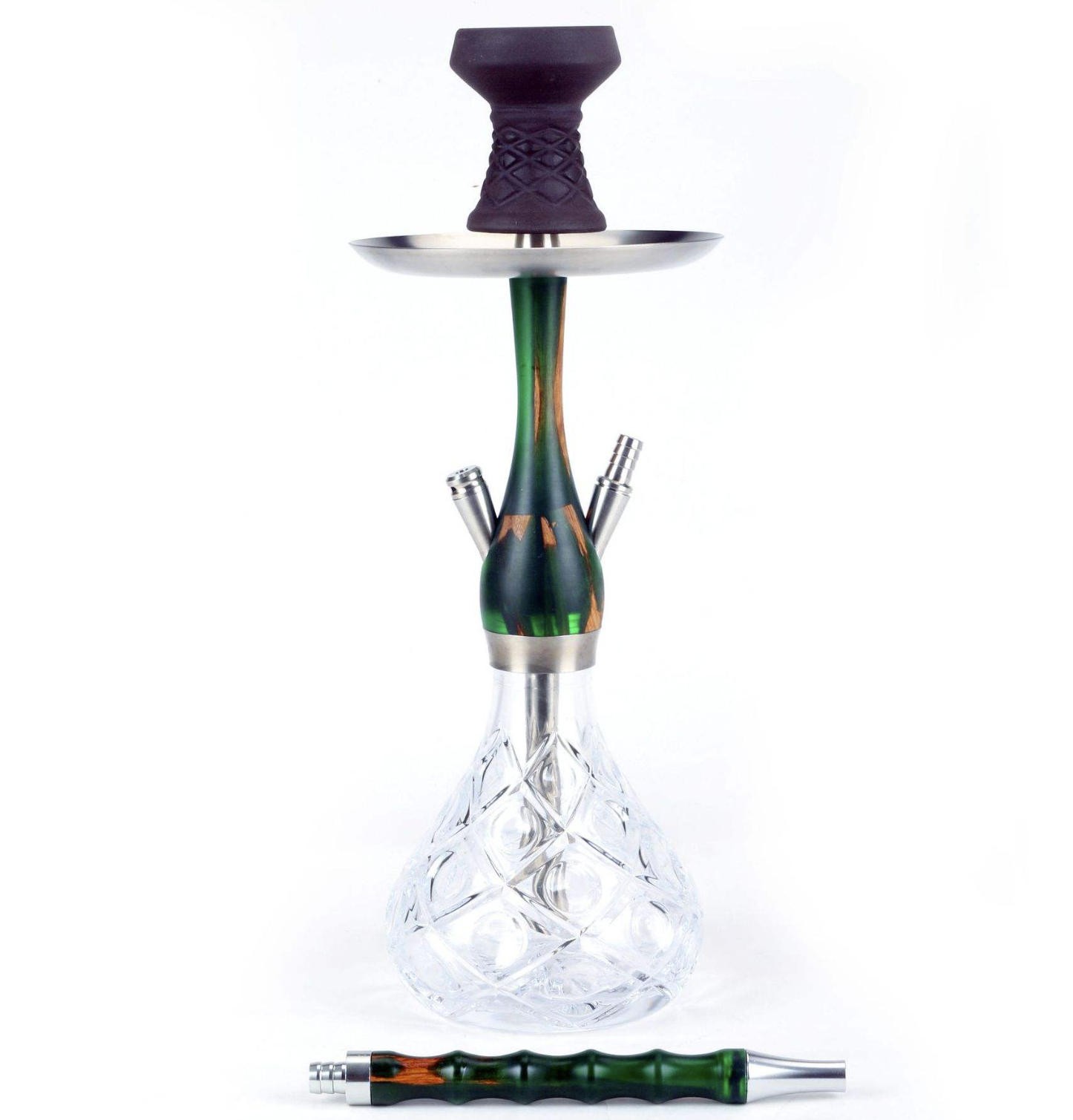



Product Item:AK012
Aluminum Hookah
Hookah Wholesale
High quality
| Item No. | AL-AK02 |
|---|---|
| Material |
wooden-hookah |
| Height | About 40m |
| Color SILIVER | |
| Weight | About 500g |
| Packing6 | pcs/ctn (Can be packed as required) |
| Shipment | By sea,express(DHL,Fedex,UPS and so on) or air |
| Payment | Trade Assurance,Paypal,Western Union and T/T |
| Produce Time | 5-20days (If the order is small, it can be shipped soon) |
| Delivery time | 10-30days |
| Customizable | OEM ODM |
A wooden hookah pipe, also known as a shisha or water pipe with a wooden stem, is a traditional smoking device that incorporates wood as a primary material for its stem or body, distinguishing it from more common metal or glass hookahs. Below is a detailed introduction to wooden hookah pipes, their components, characteristics, advantages, disadvantages, and cultural significance.
A hookah is a single- or multi-stemmed instrument used for vaporizing and smoking flavored tobacco, known as shisha, or sometimes herbal mixtures. The smoke is passed through a water basin to cool and filter it before inhalation. In a wooden hookah pipe, the stem—the central shaft connecting the bowl to the water base—is made of wood, often chosen for its aesthetic appeal and unique smoking properties. Wooden hookahs are particularly popular in regions like Iran, where they remain a traditional choice for enthusiasts.
A wooden hookah pipe consists of several key components, similar to other hookahs but with wood as a defining material:
The operation of a wooden hookah pipe follows the same principles as other hookahs. Charcoal heats the tobacco in the bowl, producing smoke through a combination of vaporization and minimal combustion. When the user inhales through the hose, a vacuum is created, drawing the smoke down the wooden stem, through the water in the base for cooling and filtration, and up through the hose to the user. The wooden stem may influence the smoke’s flavor, depending on whether it is lined with metal or exposed directly to the smoke.
Wooden hookah pipes trace their origins to the 15th–16th century in India and Persia, where hookahs were initially crafted from materials like coconut shells and wood. Attributed to Persian physician Hakim Abu’l-Fath Gilani, the hookah was developed to filter tobacco smoke through water, initially using wooden components for their availability and workability. In the Mughal Empire, wooden hookahs became symbols of status and refinement among the nobility. Today, they remain popular in specific regions, such as Iran, where traditional designs are valued for their flavor-enhancing properties and cultural heritage.
To use a wooden hookah pipe:
Despite the water filtration, wooden hookah pipes, like all hookahs, pose health risks. The smoke contains nicotine, carbon monoxide, and other toxic substances, and prolonged sessions may increase exposure compared to cigarettes. Shared use of hoses can also transmit infectious diseases if not properly cleaned. Users should practice moderation and ensure regular maintenance to minimize risks.
Wooden hookah pipes offer a unique blend of tradition, aesthetics, and flavor enhancement, making them a cherished choice for enthusiasts who value their cultural significance and the evolving smoking experience. However, their maintenance challenges and potential for flavor retention make them less suitable for those seeking versatility or a low-maintenance device. By understanding their components, benefits, and care requirements, users can fully appreciate the artistry and heritage of wooden hookah pipes while using them responsibly.